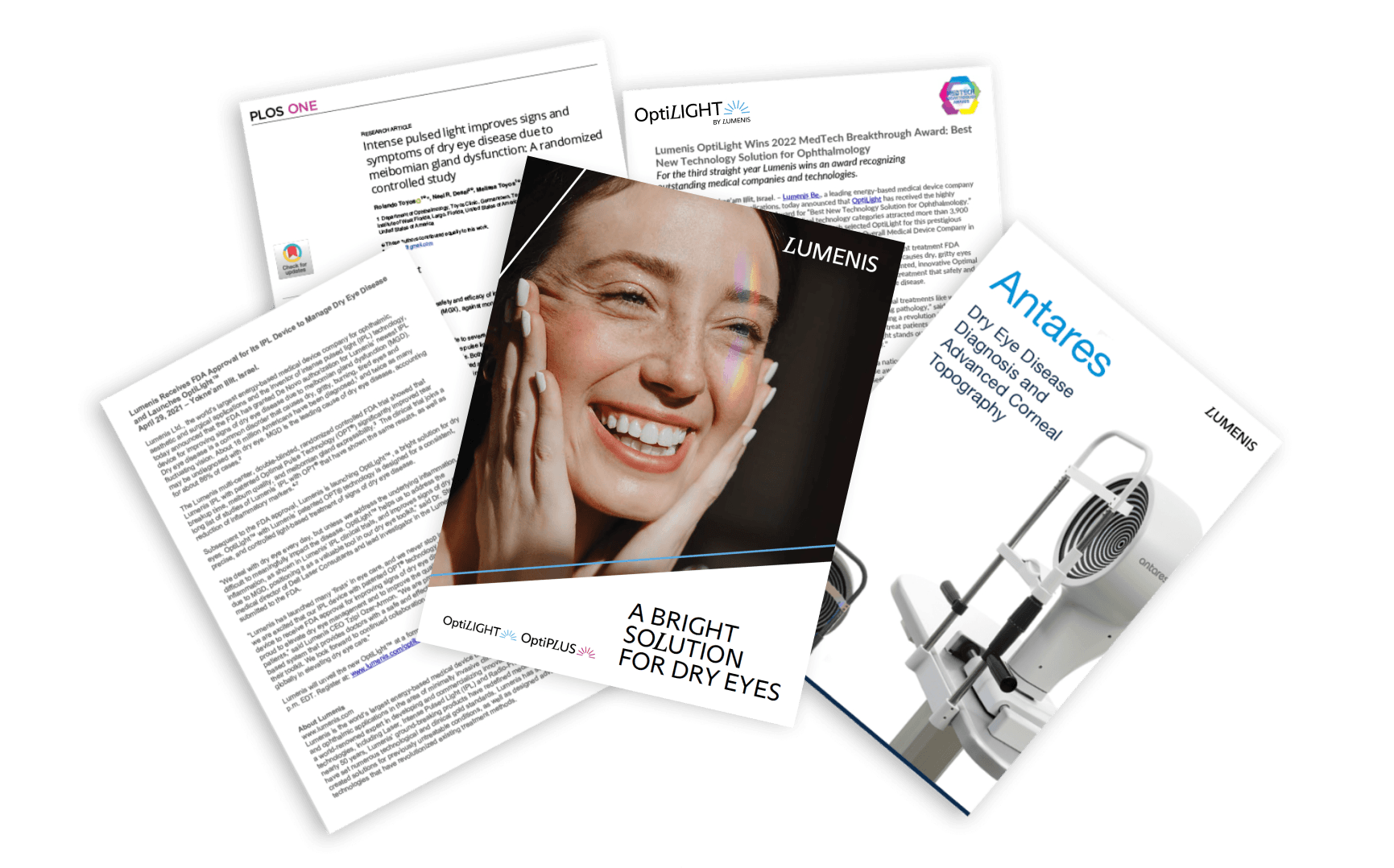When I opened my own practice in 2020, I knew I wanted to reimagine the traditional eyecare practice and give patients an unparalleled experience that balances a tech-forward philosophy with personalized care and a human touch. That’s why I was the first practitioner to purchase OptiLight. I knew treatment with OptiLight could help me offer the highest quality of care to my patients with dry eye disease, and I quickly found out just how easy it was to start using OptiLight, implement it in my practice and create a new revenue stream.
OptiLight Comprehensive Dry Eye Solution
Because my practice is still in its first year, every patient that walks through the door is a new patient. As part of a complete exam, everyone has a thorough dry eye evaluation. Once I understand the patient’s condition and lifestyle, I create a personalized treatment plan. I often combine elements such as immunomodulators, thermal treatment for meibomian gland dysfunction, and blepharitis therapies to manage this multifactorial condition.
When I read that Lumenis IPL with OPT received FDA approval for management of dry eye disease, I contacted Lumenis and became the first practice to purchase OptiLight. It fit my high standards as a safe, gentle, nonsurgical therapeutic procedure that elevates patient care. And the 10-15 minute sessions with no downtime are convenient for busy patients, so I knew it could propel my practice forward.
Easy Implementation—and Great Results
OptiLight is so easy to learn that I was able to jump right into doing the procedure. Everything is already set up on the device, including built-in clinically validated treatment protocols and standards. In fact, I felt so comfortable that the patient didn’t even know it was my first—it was that easy. And because the treatments are brief, my staff can schedule them in a typical exam slot. That gives me the flexibility to schedule OptiLight anytime, rather than just in blocks.
The results have been amazing. Within a month of acquiring the new OptiLight system, I’ve grown to averaging 3-4 treatments a day and signing up 10 new patients per week. The system is already contributing meaningfully to overall practice profitability. I expect the OptiLight will pay for itself well within 6 months.
Most importantly, patients who have been suffering with dry eye love the results. They schedule the full course of four treatments over the course of a few months. OptiLight goes hand in hand with my goals to provide the best care possible, be tech-forward to fit modern needs and expectations, and go beyond the standard of care.
Indication for Use:
Improvement of signs of Dry Eye Disease (DED) due to Meibomian Gland Dysfunction (MGD), also known as evaporative dry eye or lipid deficiency dry eye, in patients 22 years of age and older with moderate to severe signs and symptoms of DED due to MGD and with Fitzpatrick skin types I-IV. IPL is to be applied only to skin on the malar region of the face, from tragus to tragus including the nose (eyes should be fully covered by protective eyewear). IPL is intended to be applied as an adjunct to other modalities, such as meibomian gland expression, artificial tear lubricants and warm compresses
Treatment with OptiLight is contraindicated for patients with the following conditions in the treatment area:
Ocular surgery or eyelid surgery or Neuro-paralysis within 6 months prior to the first treatment; Uncontrolled eye disorders affecting the ocular surface; Pre-cancerous lesions, skin cancer or pigmented lesions in the planned treatment area; Uncontrolled infections or uncontrolled immunosuppressive diseases; Recent Ocular infections; Prior history of cold sores or rashes in the perioral area, including: Herpes simplex 1 & 2, Systemic Lupus erythematosus and porphyria; Use of photosensitive medication and/or herbs that may cause sensitivity within 3 months prior to the first IPL session; Recent radiation therapy to the head or neck or planned radiation therapy; Recent treatment with chemotherapeutic agent or planned chemotherapy; History of migraines, seizures or epilepsy.
Patients eyes must be completely occluded during the treatment. Please refer to the operator manual for a complete list of intended use, contraindications and risks.
Please consult your physician as to whether this procedure is suitable for you.
The following possible side effects can occur following IPL treatments:
Pain/discomfort, damage to natural skin texture, change of pigmentation, scarring, excessive edema, fragile skin, bruising, burns, pruritus and xerosis. Please refer to the user manual or ask your doctor for a complete list of intended use, contraindications and risks
Discover new
possibilities
Download OptiLIGHT and OptiPLUS info kit

PB-00039360 Rev A
